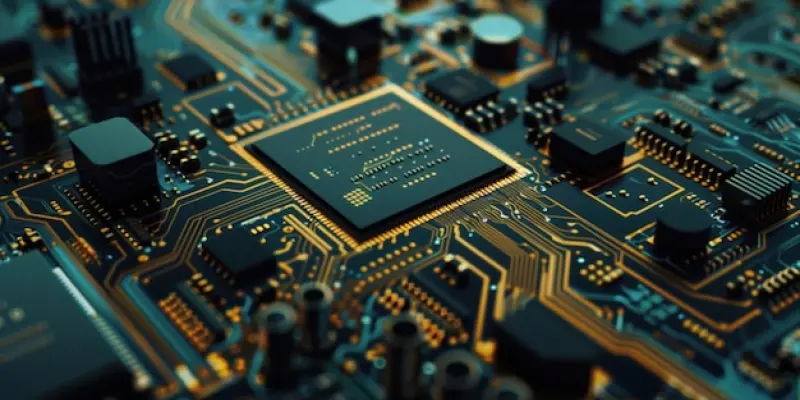Intel is planning a refresh of its Arrow Lake-S Desktop CPU lineup. This refresh is expected to bring minor but impactful upgrades to the series. With these enhancements, Intel aims to bolster the performance of the Arrow Lake-S lineup, utilizing the same dies as the future Arrow Lake-HX family. The improvements are particularly focused on a faster Neural Processing Unit (NPU) and enhanced gaming performance, building on the innovative Core Ultra Series 3 architecture.
Enhanced NPU Performance
New NPU Architectures
Intel’s latest roadmap indicates that the Arrow Lake-S Refresh will feature advanced NPU architectures. The NPU5, equipped with 18–50 TOPS (Tera Operations Per Second), will be available in 1-3 Tiled configurations. This is a significant leap from the previous models, promising more robust AI capabilities, which are crucial in processing-intensive tasks such as real-time data analysis and deep learning applications.
Additionally, Intel plans to introduce the NPU6 model, which will boast up to 75 TOPS utilizing a 4-tiled design. This level of performance aims to meet the growing demands for AI-driven processes in both consumer and professional applications. Although the refresh faced some rumors of cancellation earlier, recent developments have reinstated confidence that Intel is moving forward with the project. The focus will be on leveraging these new architectures to offer a substantial boost in NPU performance, something that could redefine user expectations from desktop CPUs.
The inclusion of these powerful NPUs is likely to address one of the most notable issues with the current Core Ultra 200S lineup: underwhelming gaming performance. By integrating more advanced NPU capabilities, Intel is not only enhancing CPU operations but also significantly improving the overall gaming experience. Gamers and professionals alike can expect smoother, more responsive performance when using applications that can fully harness the capabilities of these new NPUs.
Target Implementation and Benefits
Targeting the LGA 1851 platform, the Arrow Lake-S Refresh CPUs are designed to offer seamless integration, ensuring compatibility with existing systems while also preparing for potential future refreshes. The release timeline suggests a late 2025 launch, strategically positioned before the anticipated Nova Lake launch in 2026. This approach underscores Intel’s commitment to maintaining a competitive edge in AI technology and gaming performance within the desktop CPU market.
By focusing on iterative updates, Intel ensures that each new release builds on the strengths and addresses the weaknesses of its predecessors. The Arrow Lake-S Refresh is expected to feature enhanced AI processing capabilities, allowing for more dynamic and intelligent system responses. This will be particularly beneficial for applications that rely heavily on AI for tasks such as predictive analytics, voice recognition, and automated learning systems.
Improvements in gaming performance are also anticipated, thanks to the revamped NPU integration. Users can look forward to a more immersive gaming experience with better frame rates and sharper graphics. Furthermore, the overall system efficiency is expected to increase, reducing lag and improving the responsiveness of high-demand applications. These enhancements demonstrate Intel’s dedication to pushing the boundaries of what desktop CPUs can achieve, particularly in terms of AI and gaming functionalities.
Incremental Updates for Gaming Enhancement
Refined Gaming Performance
Intel has recognized the essential role that high-performance CPUs play in the gaming industry. The Arrow Lake-S Refresh aims to tackle previous shortcomings by implementing incremental upgrades focused on optimizing gaming performance. By refining their processor technology and improving GPU integration, Intel is poised to deliver superior gaming experiences. The renewed focus on gaming stems from feedback on the Core Ultra 200S lineup’s struggles with delivering consistent performance.
The improvements in the Arrow Lake-S Refresh are likely to include better heat management and more efficient power consumption, which are critical for maintaining high performance during intense gaming sessions. These refinements will also result in a more stable and reliable gaming experience, reducing the likelihood of system crashes and performance dips. Gamers can expect smoother gameplay with enhanced visual fidelity and reduced system overhead. This approach mirrors Intel’s broader strategy of continually evolving its products to meet the ever-changing needs of the gaming community and tech enthusiasts.
Strategic Roadmap and Future Directions
Intel is set to refresh its Arrow Lake-S Desktop CPU lineup with minor yet significant upgrades. This refresh aims to enhance the performance and capabilities of the Arrow Lake-S series. Utilizing the same dies as the upcoming Arrow Lake-HX family, these improvements are designed to provide users with a noticeable boost in computing power. Notably, Intel will focus on a faster Neural Processing Unit (NPU), which is expected to offer improved AI and machine learning tasks, bringing more efficiency to computing processes. Additionally, there will be advances in gaming performance, which will be built on the innovative Core Ultra Series 3 architecture, aimed at providing an even more immersive and responsive gaming experience. This series of upgrades reflects Intel’s ongoing commitment to pushing the boundaries of desktop computing, ensuring that the Arrow Lake-S lineup remains competitive and up-to-date with the latest technology trends. These improvements are anticipated to cater to a wide range of users, from gamers to professionals who rely on high-performance computing.

